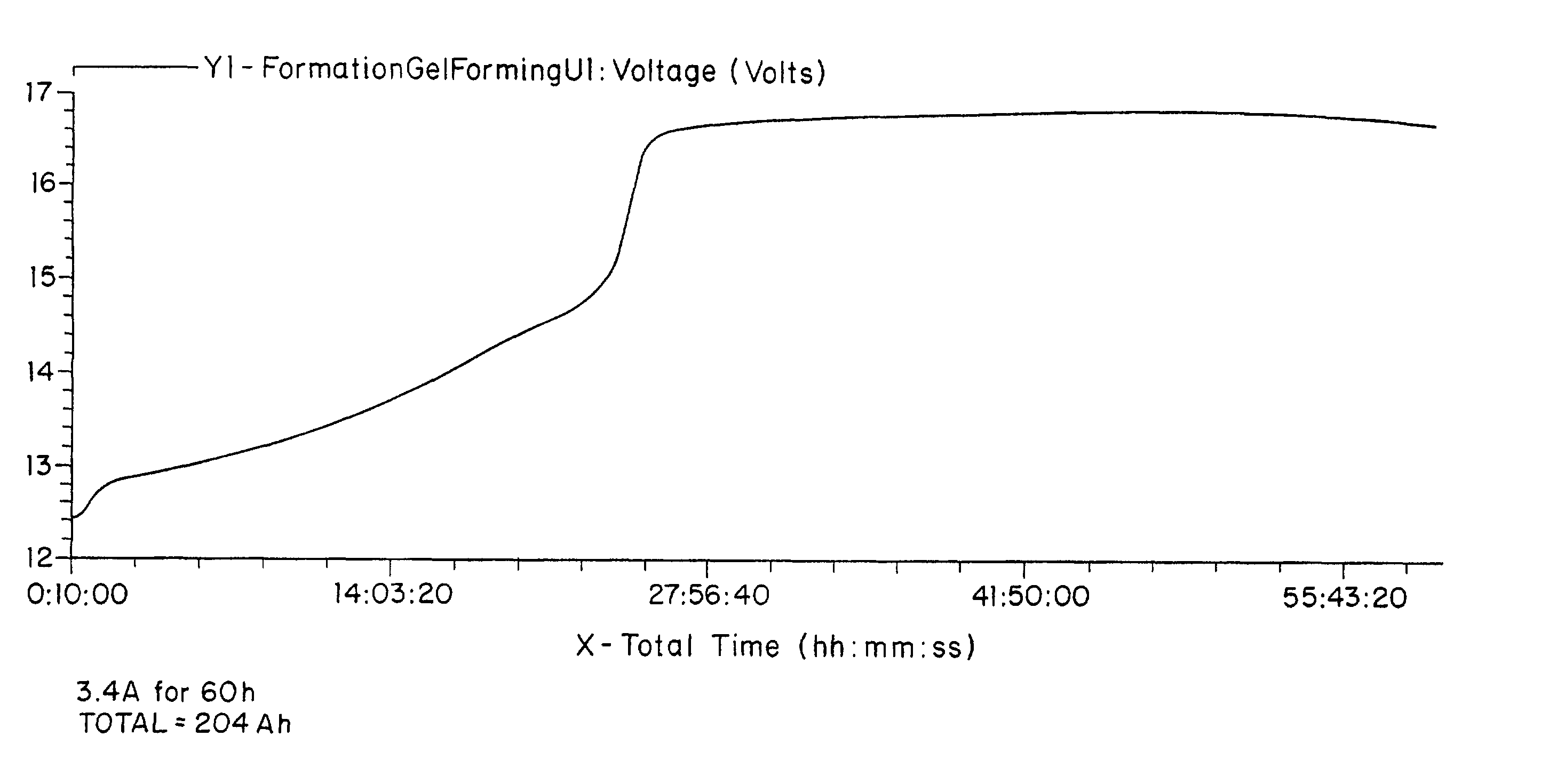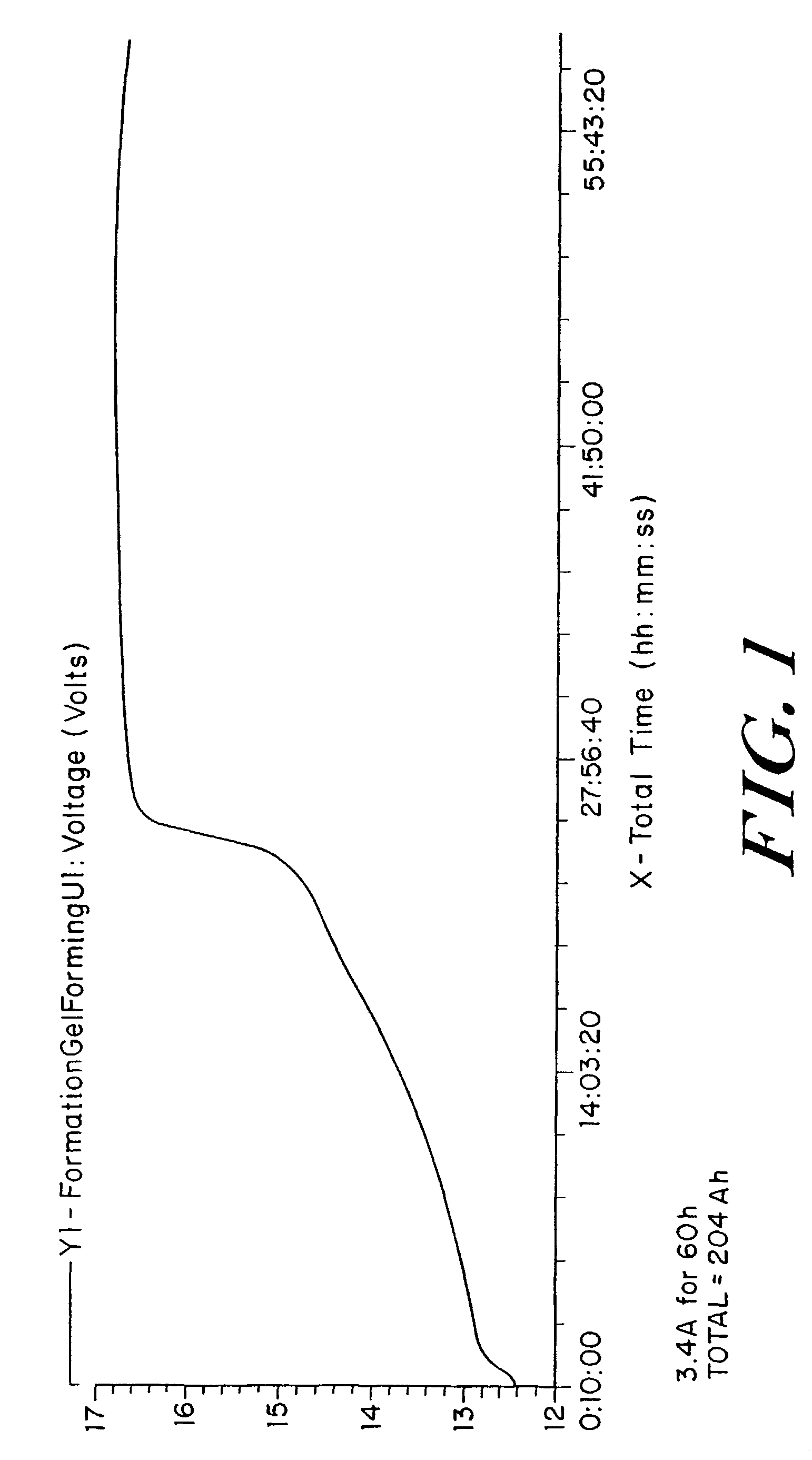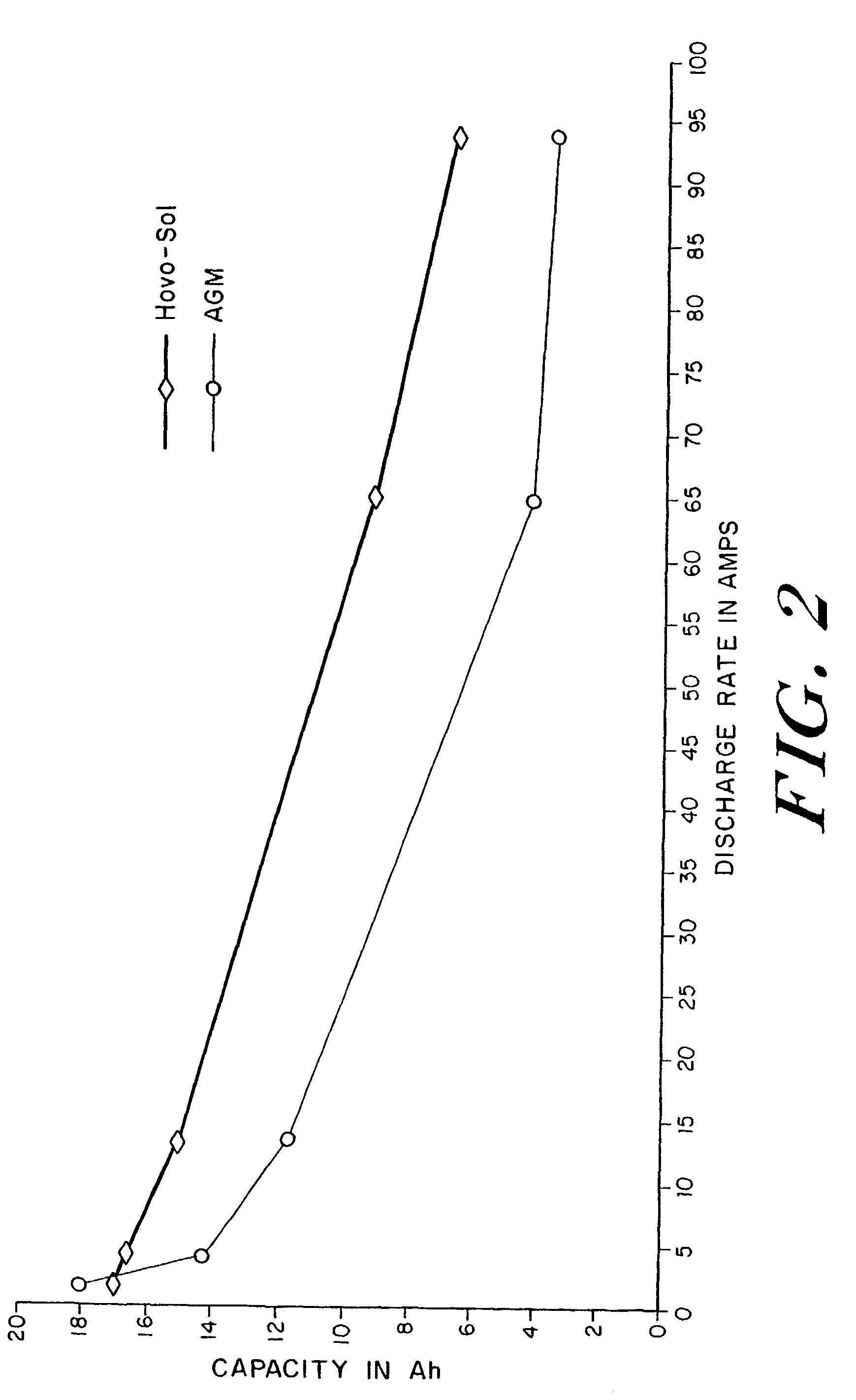Gel-forming battery separator
- Summary
- Abstract
- Description
- Claims
- Application Information
AI Technical Summary
Benefits of technology
Problems solved by technology
Method used
Image
Examples
example
[0040]A battery was prepared with 3 positive and 4 negative plates. The battery separator of the invention was prepared by taking 24 cm by 13 cm sheets having a weight basis range of about 3.04 to 3.76 g of polyester nonwoven (Hollingsworth & Vose 7333, a polyester nonwoven having a weight basis of 95 g / m2, thickness of 2.3 mm, and Frazier permeability of 279 ces; available from Hollingsworth & Vose Company, East Walpole, Mass.) and embedding into the nonwoven in the range of about 1.86 to 2.62 g of fumed silica (See Tables 1 and 2) by mechanically pounding the silica into the nonwoven. The amount of silica used was approximately 6% of the electrolyte weight when a specific gravity of 1.28 was achieved.
[0041]
TABLE 1Weights of HOVO-SOL* separators used in the prototype U1 battery.SeparatorWeight of Non WovenWeight of addedTotal SeparatorNo.(7333)Fumed SilicaWeight13.45 g2.05 g5.50 g23.51 g2.34 g5.85 g33.49 g2.32 g5.81 g43.54 g2.36 g5.90 g53.37 g2.34 g5.61 g63.44 g2.29 g5.73 g73.52 g1...
PUM
 Login to view more
Login to view more Abstract
Description
Claims
Application Information
 Login to view more
Login to view more - R&D Engineer
- R&D Manager
- IP Professional
- Industry Leading Data Capabilities
- Powerful AI technology
- Patent DNA Extraction
Browse by: Latest US Patents, China's latest patents, Technical Efficacy Thesaurus, Application Domain, Technology Topic.
© 2024 PatSnap. All rights reserved.Legal|Privacy policy|Modern Slavery Act Transparency Statement|Sitemap



